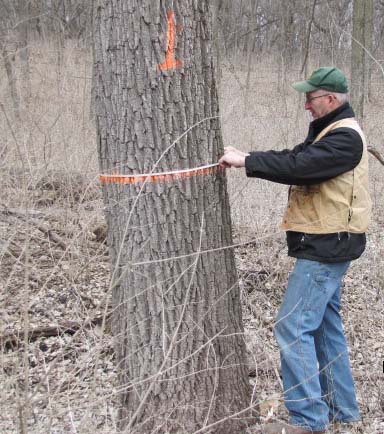
As a young district forester with the Nebraska Forest Service (NFS), Dennis Adams’ interest was in black walnut timber production and growth. This led him to begin measuring the annual growth of individual black walnut trees in both selected plantations and native woodland sites in his southeast Nebraska forestry district. Now, after 40 years with the NFS, his wealth of growth data has been analyzed and is summarized in the NFS technical paper titled “Growth of Black Walnut in Southeast Nebraska.”
For this study, tree diameter and height were measured on selected black walnut trees on five sites in southeast Nebraska. The number of years that measurements were recorded on each site ranged from 25 to 45 years. No other known study in the Midwest has collected continuous growth data on black walnut trees over such a long period of time. Soil type, groundcover, tree stocking and other site conditions varied, as did management intensity. The results of this study will form the basis for locally accurate recommendations to landowners concerning planting and managing black walnut for timber in Nebraska and the surrounding region.
Results of this long-term study indicate that the average annual increment of diameter growth on each site ranged from about 0.23 to 0.33 inches, with the average for all five sites of about 0.28 inches per year. Site quality and weather clearly affect walnut growth. Dry years reduced growth at all sites.
Even though growth was slower on some sites and/or manage¬ment intensity (thinning, pruning, weed control) varied, in general, the trees exhibited a very steady linear growth. The data also indicate that as trees mature their diameter growth slowly decreases. However, with intensive management, annual growth remained constant over time and did not decline with age.
The main conclusions that can be drawn from this long-term study include:
• Optimum growth of black walnut timber is a function of multiple factors including climate, site characteristics and silvicultural management.
• One-inch (cumulative) of diameter growth can be expected in three or four years for black walnut timber trees growing on suitable sites in southeast Nebraska and the surrounding area.
• On good sites, proper forest management is important to achieve maximum and sustained growth of timber trees.
The NFS technical paper “Growth of Black Walnut in South¬east Nebraska” is available in hard copy upon request or on the website: nfs.unl.edu.
More details at: http://go.unl.edu/yvqy